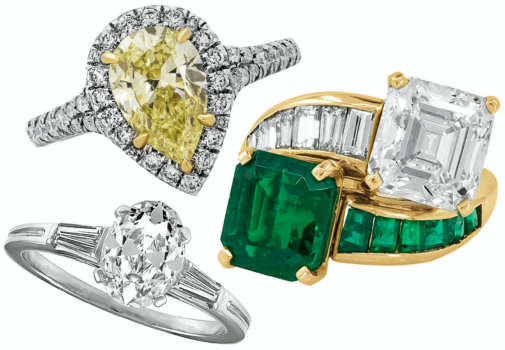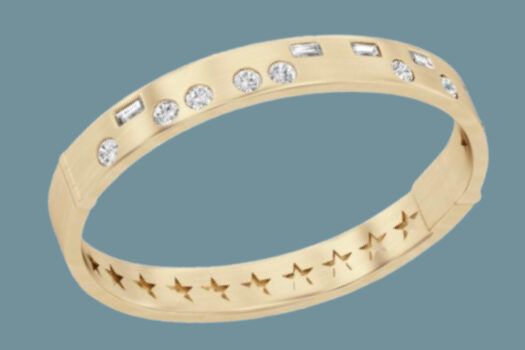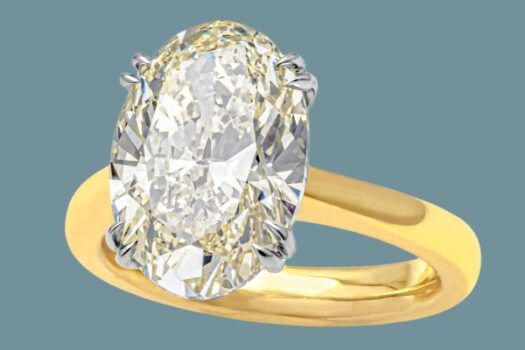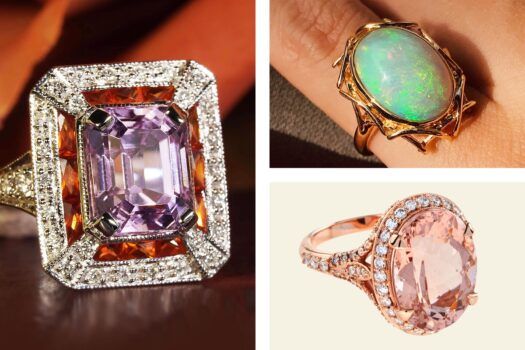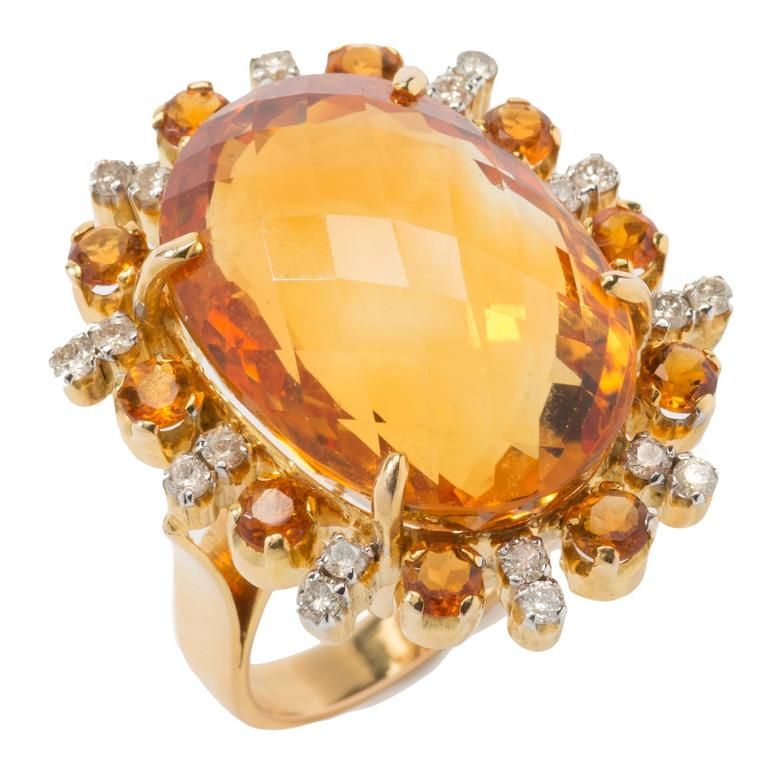
Topaz, diamond and gold ring. Offered by Art 1900
It’s appropriate that as the temperatures cool and the leaves turn yellow, the birthstone for November is a gem found in autumnal hues. The deep browns, reds and oranges of the topaz, a stone once believed to have the power to cure fevers, is perfect for this time of year. In fact, the palette has also inspired a second birthstone for the month: citrine, which is less expensive and easier to find. Truth be told, topazes can be found in a wide variety of colors (which can get confusing since the blue topaz, along with turquoise, is a birthstone for the month of December), but it’s nice to wax poetic about the season.
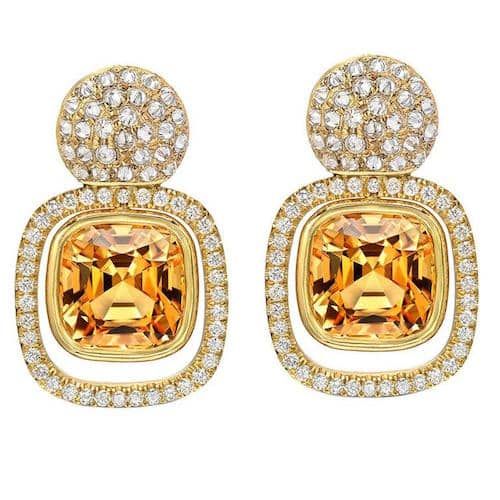
Imperial topaz, diamond and gold earrings. Offered by Tamir
Chemical Composition
The topaz can be blue, green, yellow, pink, purple and red. The colors of this allochromatic stone result from impurities in its crystal structure and are not part of its chemical composition, which is aluminum silicate fluoride hydroxide. The true color of topaz is no color at all. Isn’t it fascinating that a stone that can come in a variety of colors is colorless in its purest form?
Sometimes, a topaz gets mistaken for a diamond, since it is also a hard stone and scores an eight on the Mohs Hardness Scale. Surprisingly, some colors can even fade in sunlight. The two most desired hues are blue, which is achieved when the stone is heat-treated, and reddish-brown, also known as Imperial Topaz, the most valuable of all topaz varieties.
Uncut topaz also comes in sizes ranging from little crystals to large rocks. A little-known fact about topaz is that, because they come in crystals that are very large, they are measured in kilos and not carats. According to the Gemological Institute of America, a transparent topaz crystal once discovered in Minas Gerais, Brazil, weighed 596 pounds.
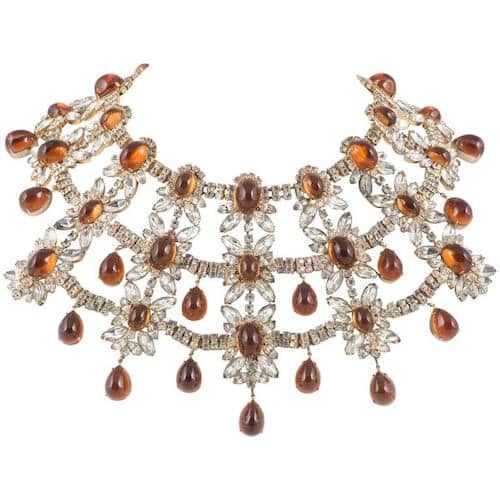
Topaz cabuchon and paste collar by Kenneth Jay Lane. Offered by Furbelow & Co.
Historical Origins
There is nothing straightforward about the history and origins of this gemstone. The word “topaz” comes from Topazios, the Greek name for St. James Island on the Red Sea (presently known as Zabargad). The stone itself was not mined on this island, but a similar yellowish or olivine stone, perhaps a peridot or chrysolite, was found there. Nonetheless, the name stuck. The Greeks believed that topaz protected the wearer and gave them strength.
Another theory for its etymology is that it comes from the Sanskrit word “tapas,” meaning heat or fire, which make sense given the desirable orange-red color variety. From the Middle Ages, topaz was often associated with clergy and royalty, probably because they thought it had special powers for curing diseases and breaking magical spells.
Today, the world’s largest topaz can be found in the collection of the Smithsonian Institution’s National Museum of Natural History. Weighing 22,892.5-carats, the American Golden is one of the world’s largest faceted gems. The Adiel Topaz, comes in close second weighing 20,769 carats and residing at the Field Museum of Natural History in Chicago. The Field Museum is also home to the topaz with the world’s best name: the Blaze. This is the largest Imperial Topaz in a museum collection. Weighing 97.45 carats, the stone is surrounded by diamonds and set in a rose-gold pendant designed by Lester Lampert of Lester Lampert, Inc.
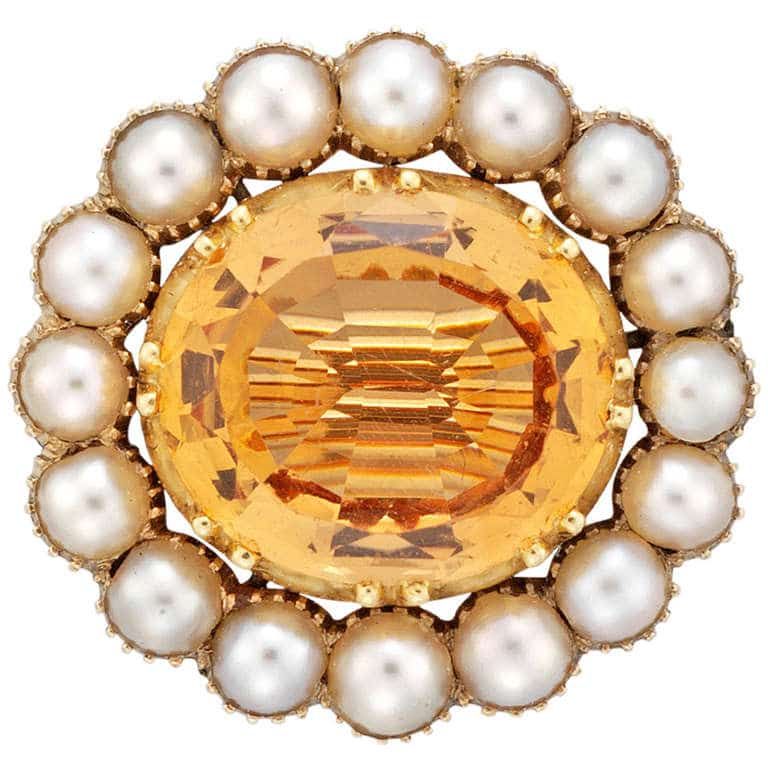
Georgian 5.2-carat topaz, pearl and gold cluster brooch. Offered by Bentley & Skinner
Geographic Sources
Topaz can be mined in many different locations around the world. One of the most famous mines is the Capão Imperial Topaz mine near Ouro Prêto in the Minas Gerais region of Brazil. In the 19th century, Russia’s Ural Mountains were home to the largest topaz mines, but the czar prevented anyone outside the monarchy from gaining access to the stone.
Who can blame him for wanting these beautiful Imperial Topazes all to himself? The Russian mines have since closed, and Imperial Topaz, although very scarce, can be found in Ouro Prêto. The Capão mine also produces large amounts of colorless topaz. Only Sri Lanka comes close in its abundance of the colorless variety. Otherwise, there are small mines with colorless topaz in Namibia, Nigeria, Madagascar and Myanmar, while Mexico is a good source for orange-brown stones.

